A brief history of guitars, in fifteen instruments.
I repeat, brief. Even then, there are important steps and innovations to be documented by the simple act of picking out items from my collection. Of course, these are not the original groundbreakers, merely examples. As mentioned earlier, there is no structural difference between Leo’s first Broadcaster and a Mexican Player from seventy years later.
1850: Classical guitar


Guitars have been with us for centuries, in various shapes. The well-known classical nylon-stringed Spanish guitar with the flat fretboard found its form in the mid-1800s, from prominent maker Torres and others.
Pictured is an Ibanez from 1973.
1900: Steel strings
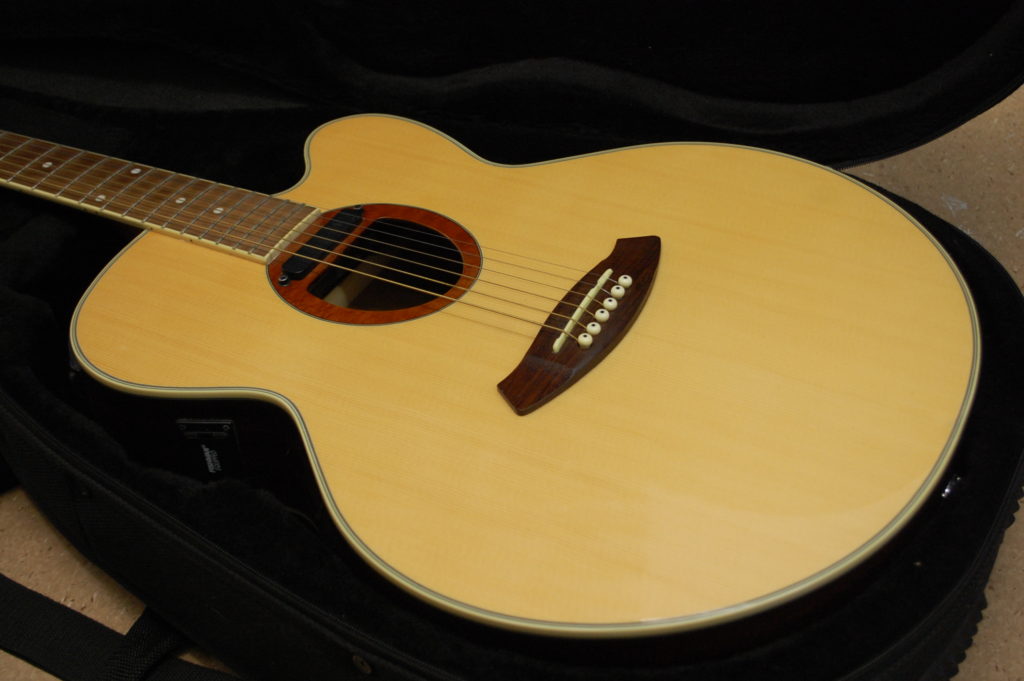

Steel wire have many uses, and apart from keeping the herds fenced in, it was put to use on guitars. Both cheaper and louder than the gutskin used so far, but the soundboard and neck needed bracing to withstand the added pressure.
Ibanez steel-string. This one with electronics and cutaway.
1900: Archtop
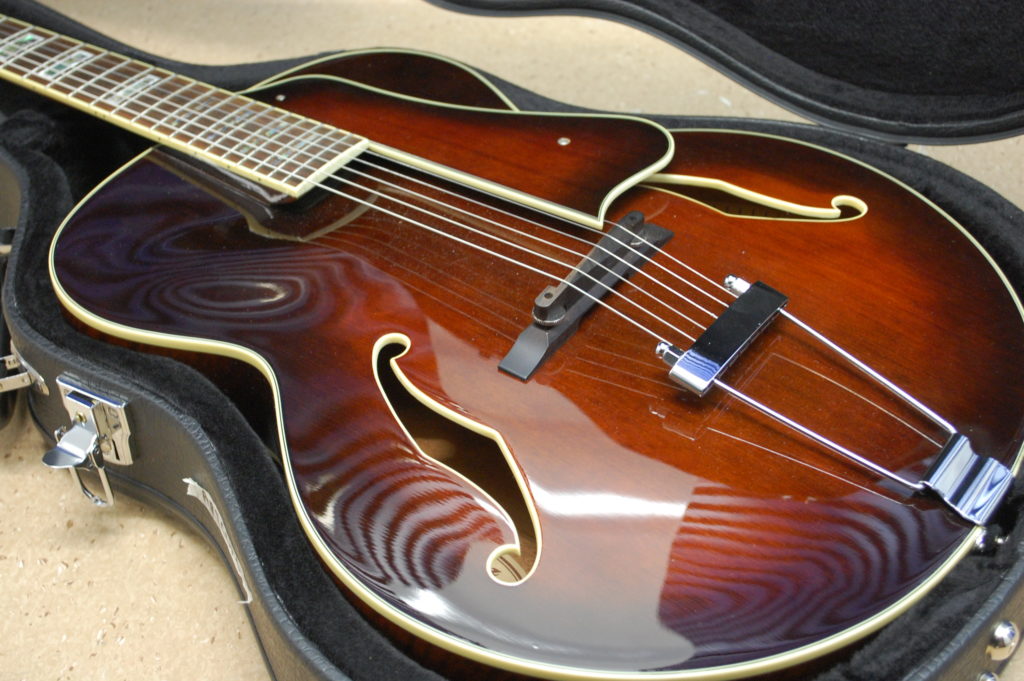

Around the previous turn of the century there were several manufacturers making archtop mandolins and guitars. Taking the principle of a thin, hard resonant top known from violins, the new design enabled guitars to project better through the sound of the other instruments in a band, at least to a certain degree.
This Ibanez is a modern take on the archtop before the cutaway and the electronics were introduced.
1925: Resonator

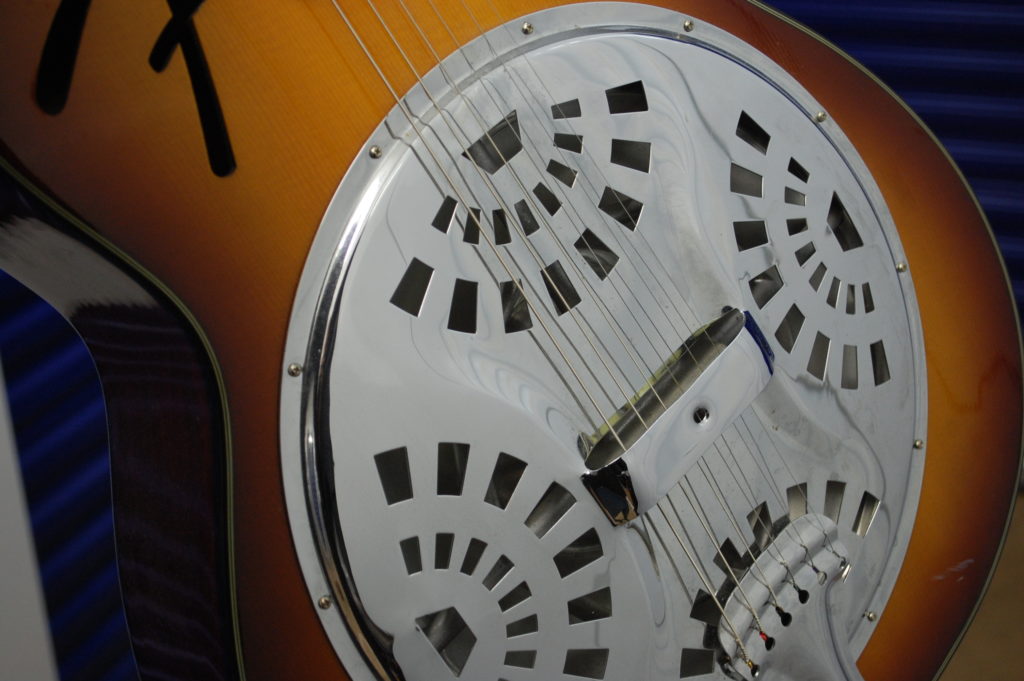
To make the guitar even louder, the Resonator model was introduced. The sound was amplified by the metal cone (or three) connected to the bridge. Shorter but more cutting sounds were the result.
Fender model using the patent from the mid-twenties on a model from 2000.
1930: Electric lap steel
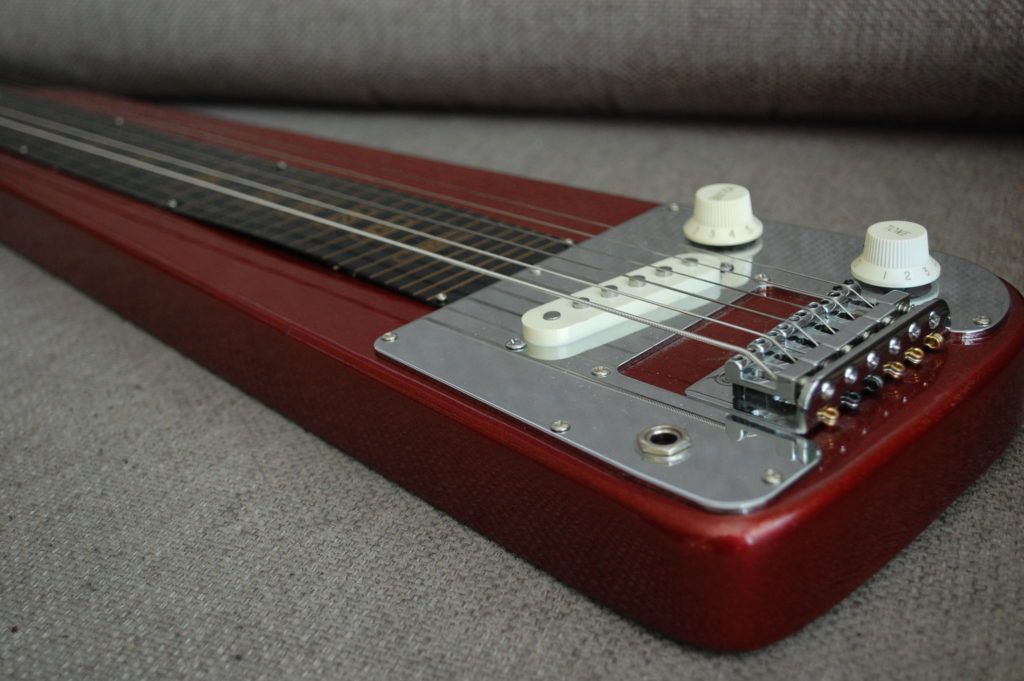
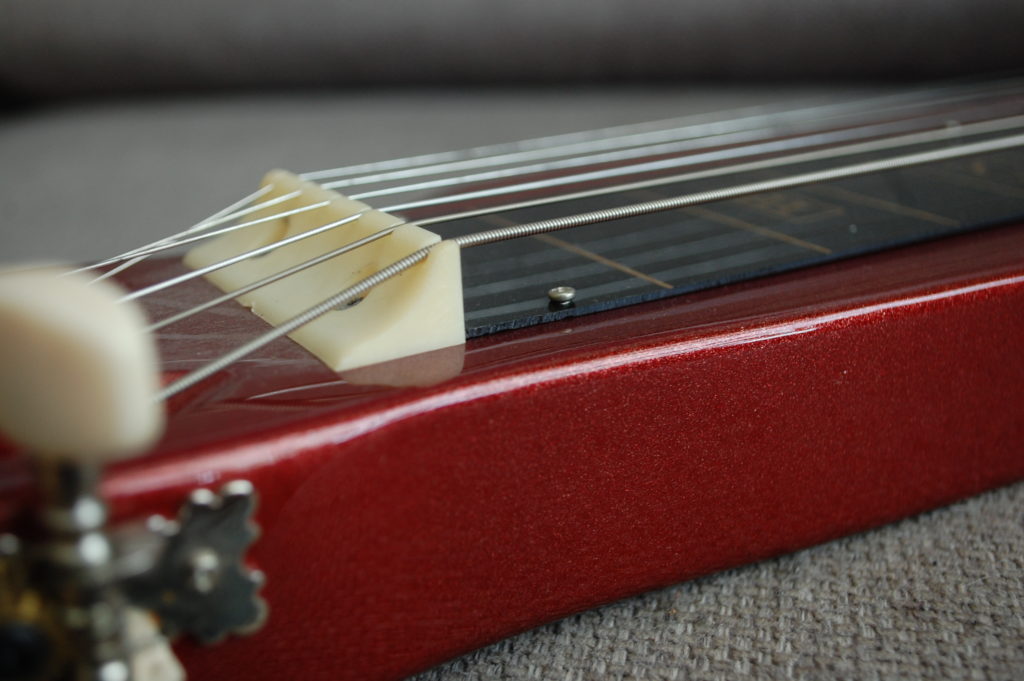
The first electrics were lap steels, first made in the early thirties. The physics of acoustics say that you may have either volume or sustain, and the notes ring longer with a small stiff body, as opposed to the shorter, louder sounds of a full-bodied acoustic where more air has to be moved.
This Artisan lap steel with a single pickup has the same features as the early examples from sixty years earlier.
1936: Electric Spanish
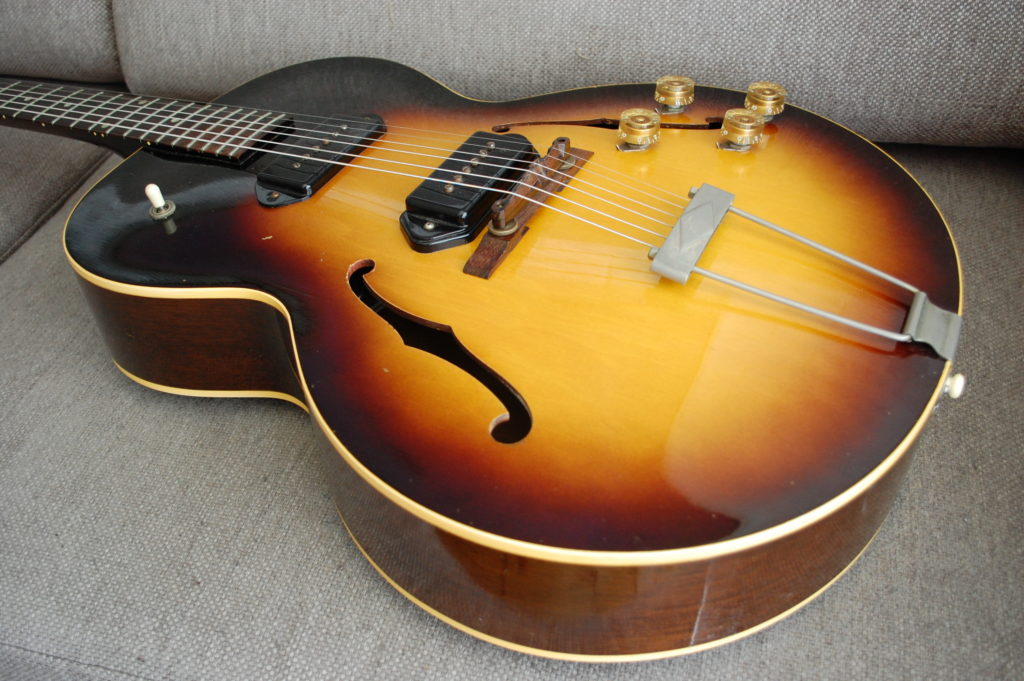
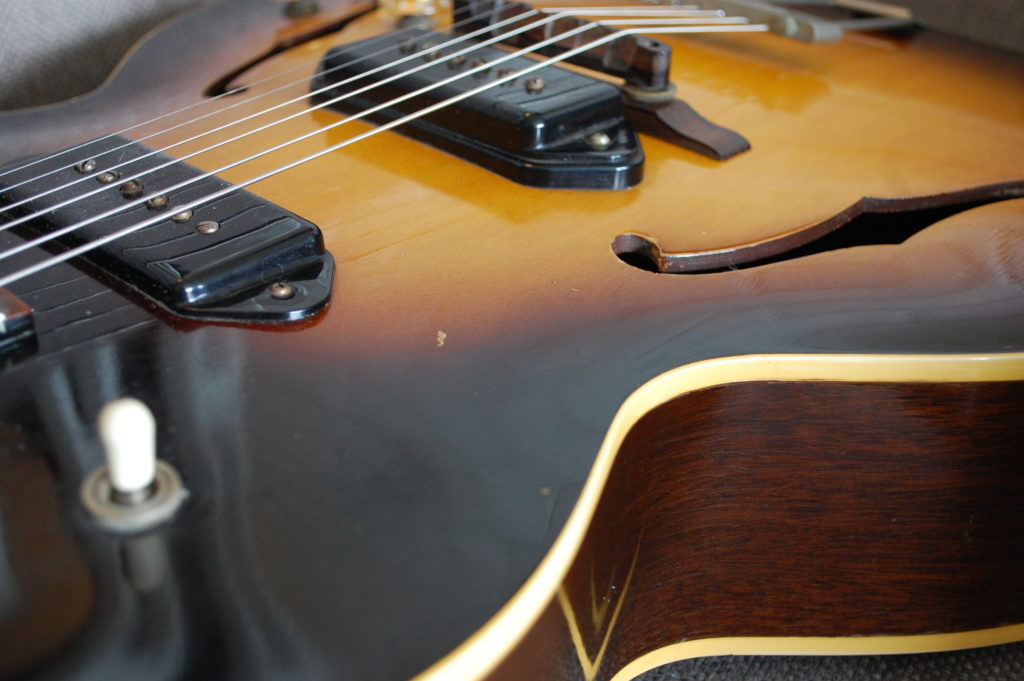
The first ES (Electric Spanish, as opposed to the Electric Hawaiian above) was made in 1936. Essentially an archtop with a pickup, the range quickly developed with two and even three pickups, and the next development: The cutaway, pictured below.
1957 Gibson with full body and two P90 pickups.
1939: Cutaway
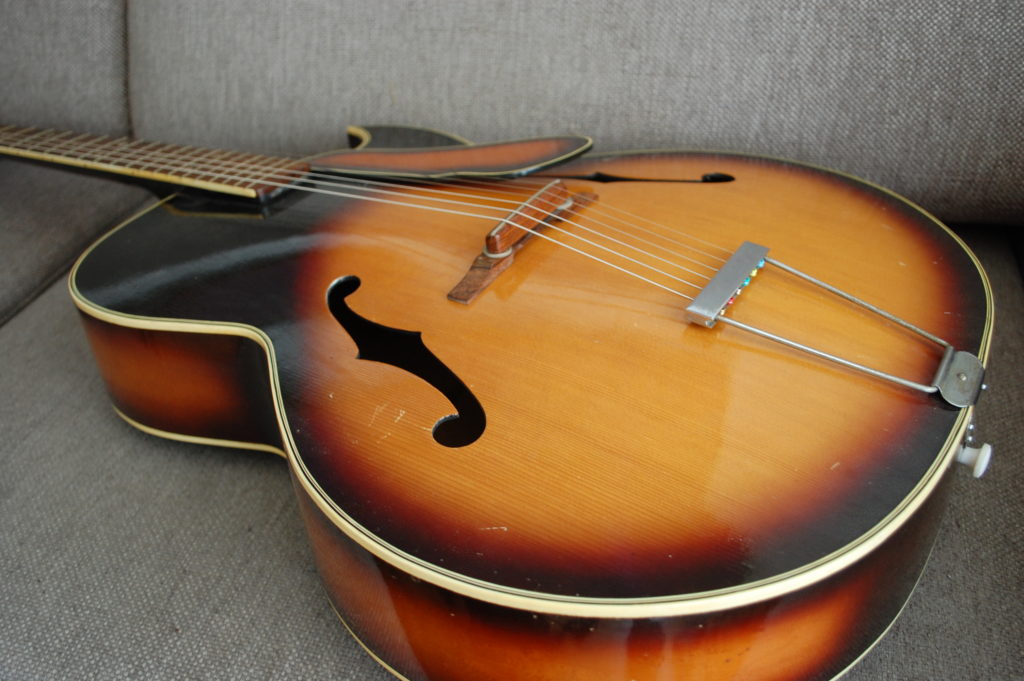

As guitar playing changed from first position strumming to soloing, and with amplification making the solos high on the fretboard heard, access to the top frets became important. In 1939 the cutaway was introduced, increasing the scope.
Suzuki archtop, probably from the fifties.
1950: Solidbody

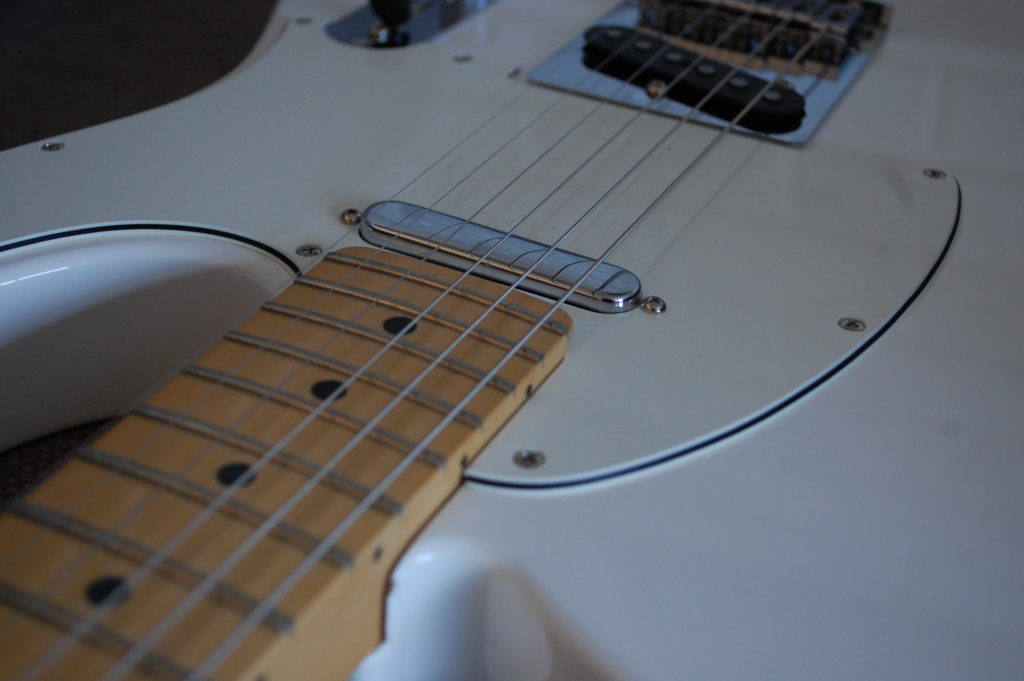
The Hawaiian steel thing aside, a guitar was a box of air with maybe a microphonic device on it, until Les Paul and others started experimenting with logs and planks with strings on them. The first commercially successful solidbody was made by a radio repairman who couldn’t play, but who understood what a guitar was going to be in the future.
The Fender Broadcaster/Telecaster is virtually unchanged even after seventy-one years. This example is brand new in 2021.
1951: Electric bass, double cutaway
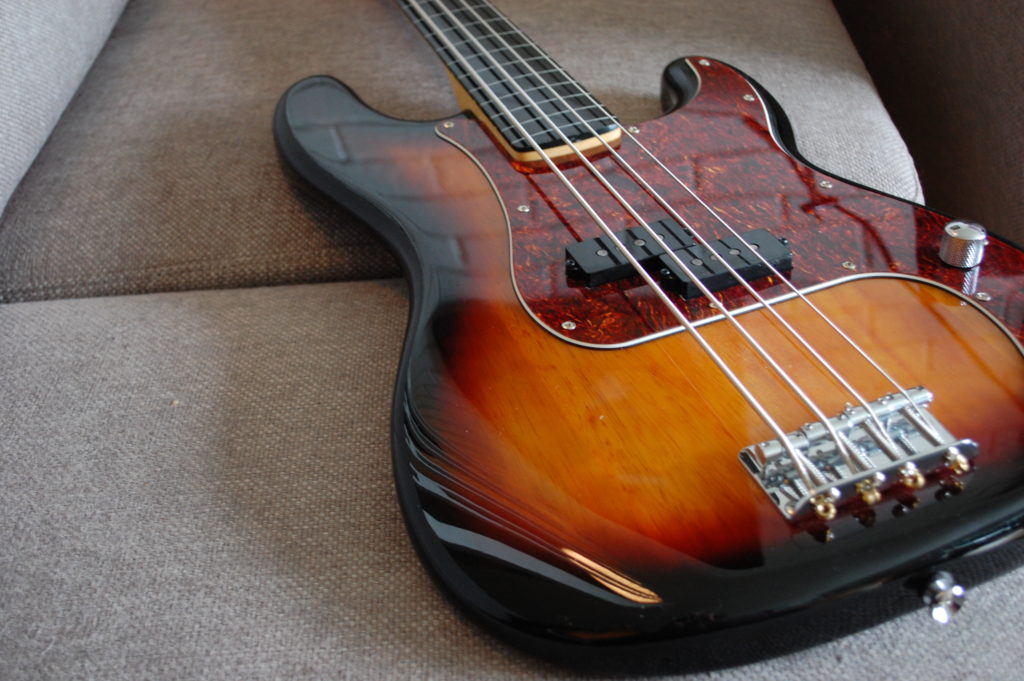

Leo the radio guy didn’t stop there. The Precision was an invention in itself, giving bass players a handier tool which also eased playing in tune. Shape-wise, the double cutaway became a template for guitar and bass design.
This design, exemplified by a Squier Fretless, celebrates its 70th anniversary this year.
1952: Carved-top solidbody
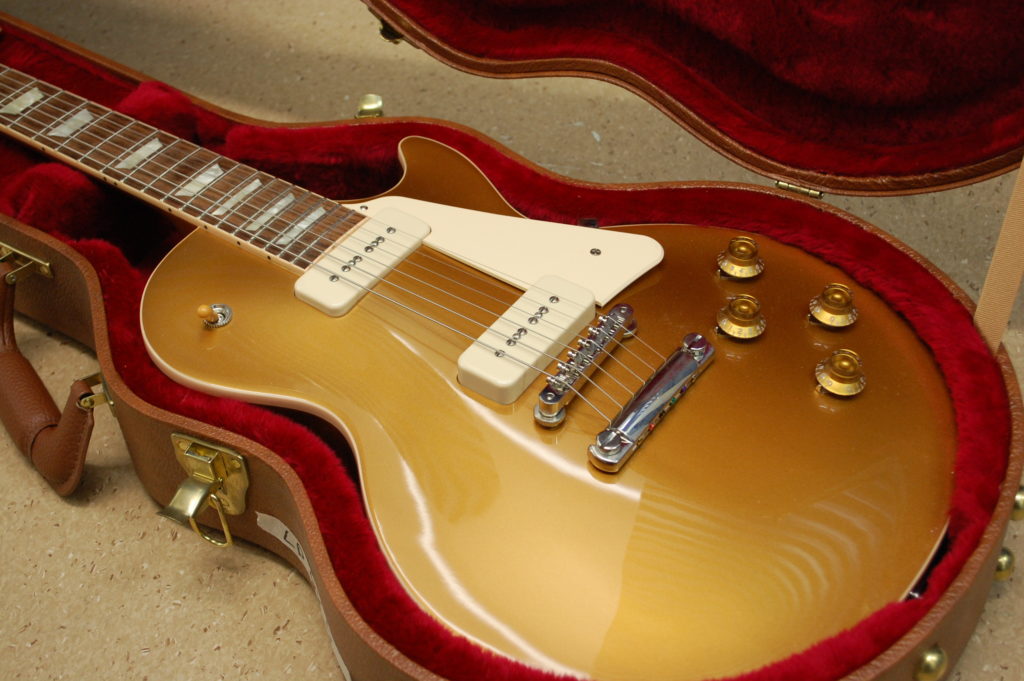

Leo wasn’t the only one. On the East Coast Gibson (of mandolin and archtop fame) developed the Les Paul Model, a plank like the Broadcaster, but with glued-in neck and a carved top, playing down the importance of the bandsaw and stressing the importance of both finishing and tonewoods.
This is a faithful recreation of the 1956 version, after certain tailpiece glitches were righted.
1954: Three pickups, double cutaway
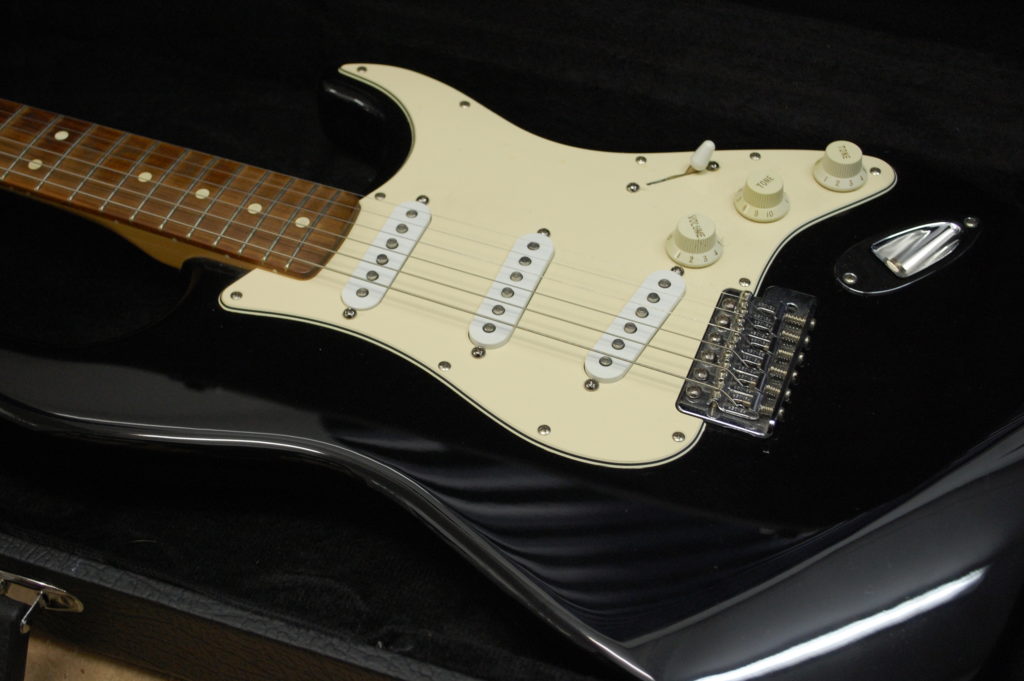

Fender didn’t rest on their laurels, and launched the three-pickup, double-cutaway Stratocaster in 1954. It is said that if you ask your grandmother to draw a guitar, the result would inevitably look like a Strat. The vibrato (wrongly called tremolo) was also a new feature.
Mexican-made Strat from 2000.
1955: Thinline body
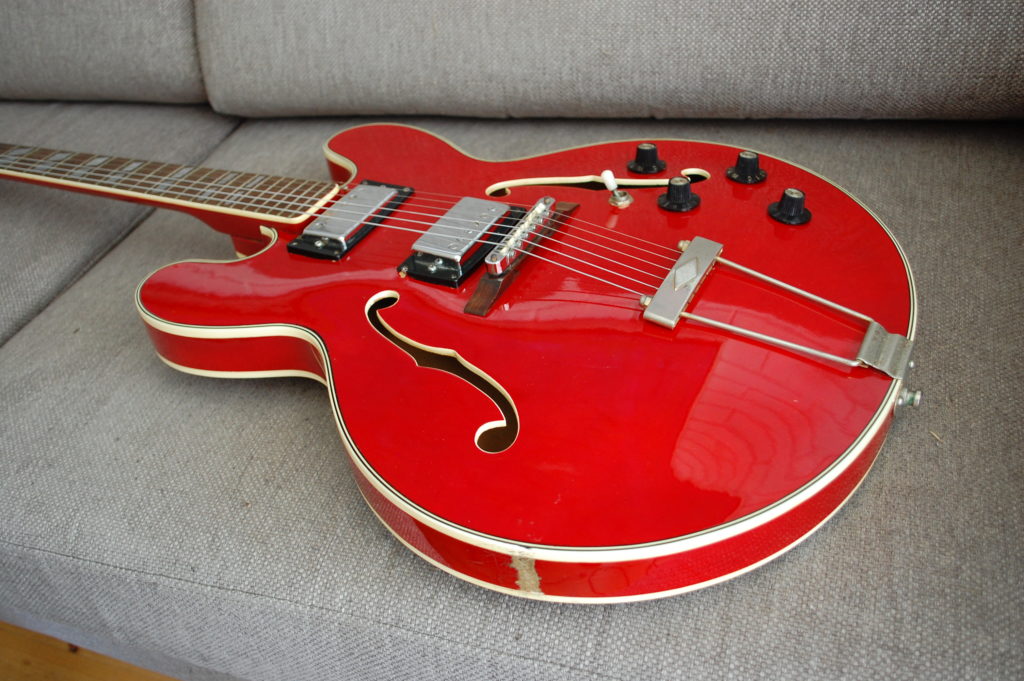
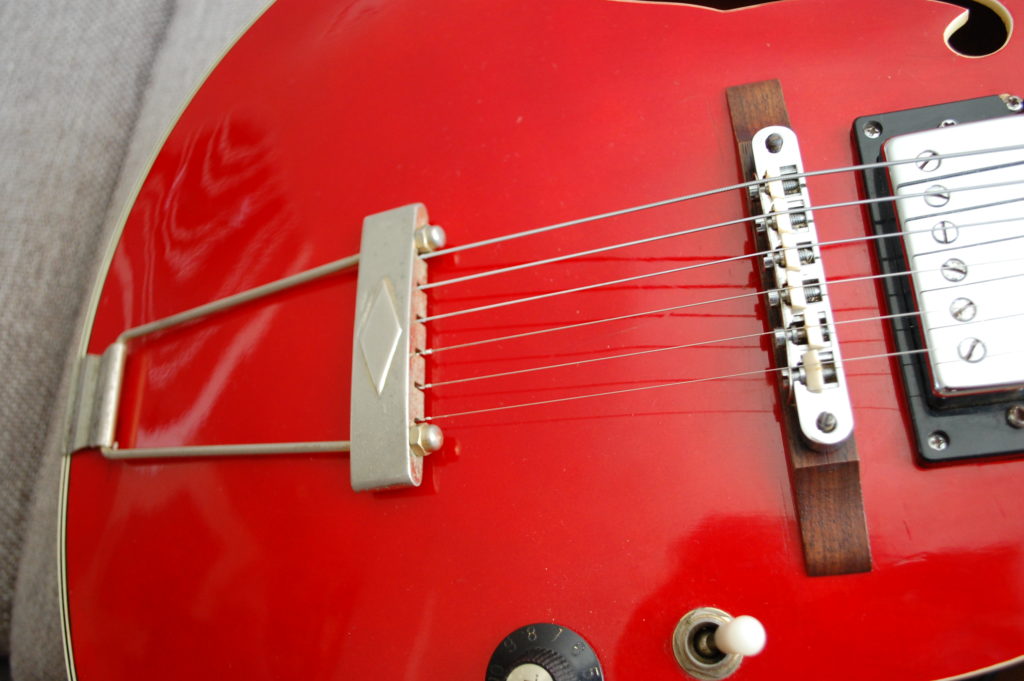
The jazz guitars were both bulky and feedback-prone. Gibson combined the archtop sound with a thinner body in the mid-fifties.
This example is a Japanese version of Gibson’s 330 series that featured P90 single coils.
1957: Humbuckers
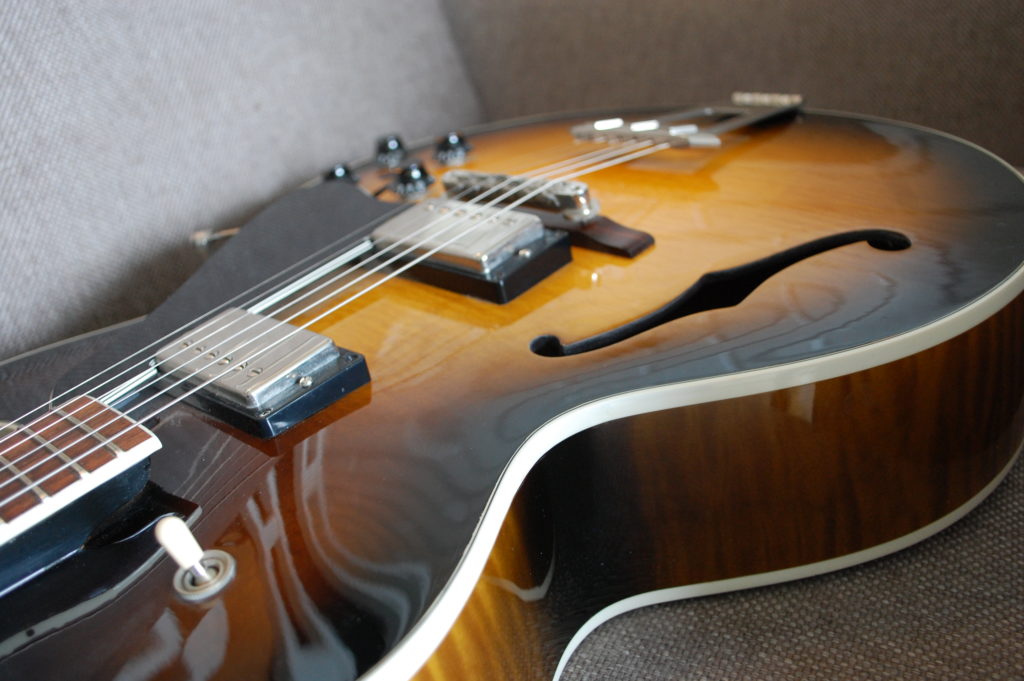
The feedback problem was solved by removing the air, but picking up interference was still an issue. The humbucker, literally two coils «bucking the hum» was the solution.
The Gibson ES-175 was one of the earliest featuring the new invention. Produced since 1947, it got humbuckers in 1957. Pictured model is from 2001.
1957: Solidbody with humbuckers
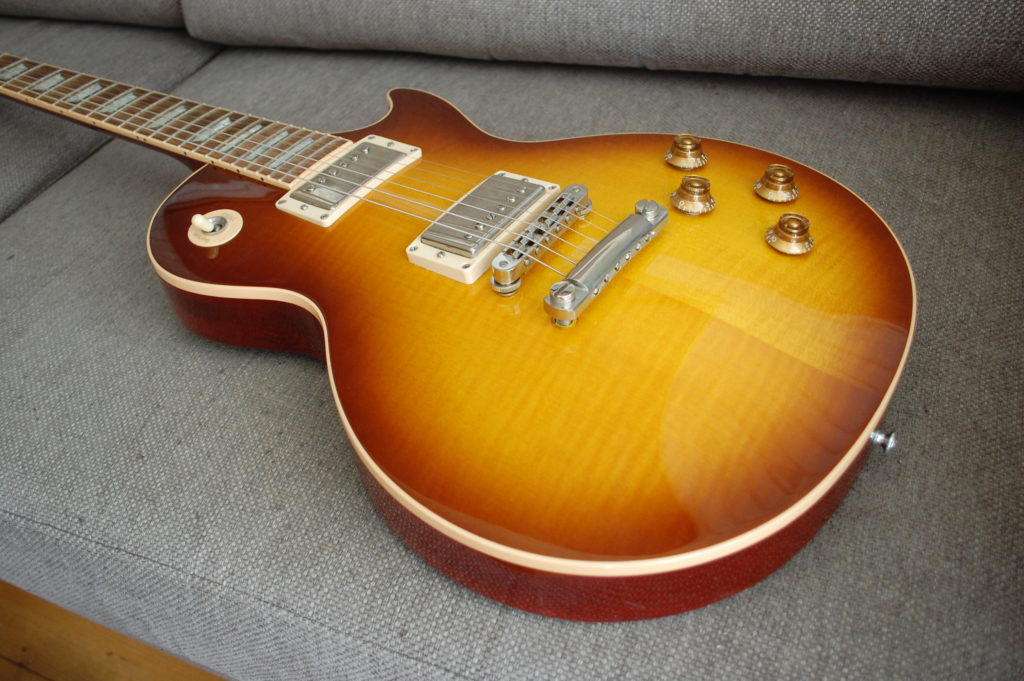
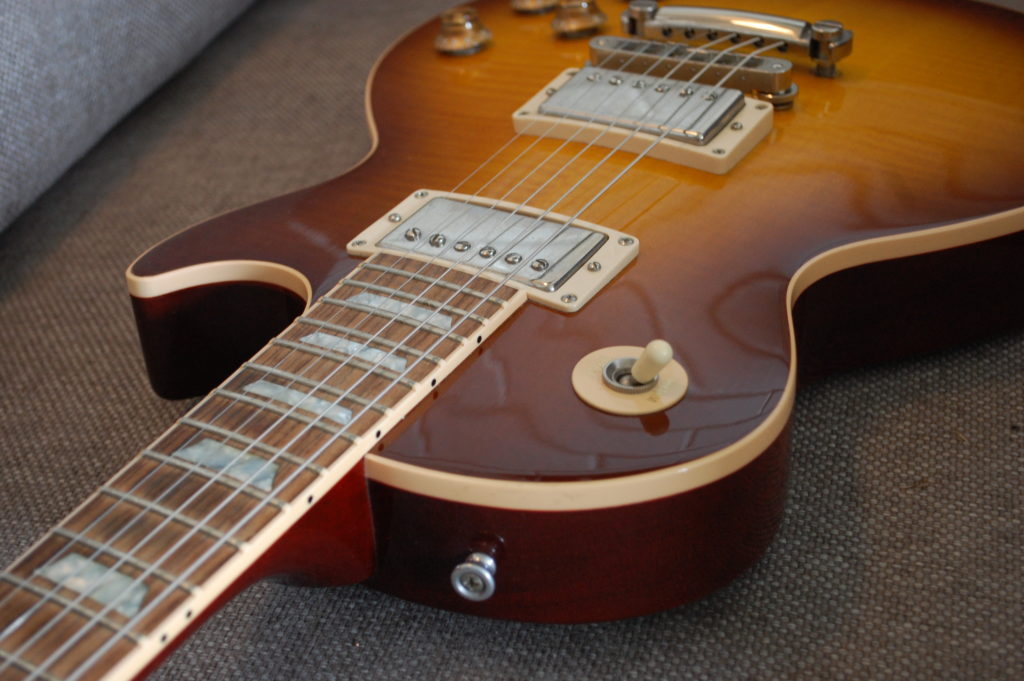
In 1957 the Les Paul, too, gained humbuckers. The next year saw the first of the legendary Sunbursts, with less than 1800 made in the three production years.
Same basic specs, a fraction of the price. Les Paul Standard bought new in 2006.
1958: Semi-hollow
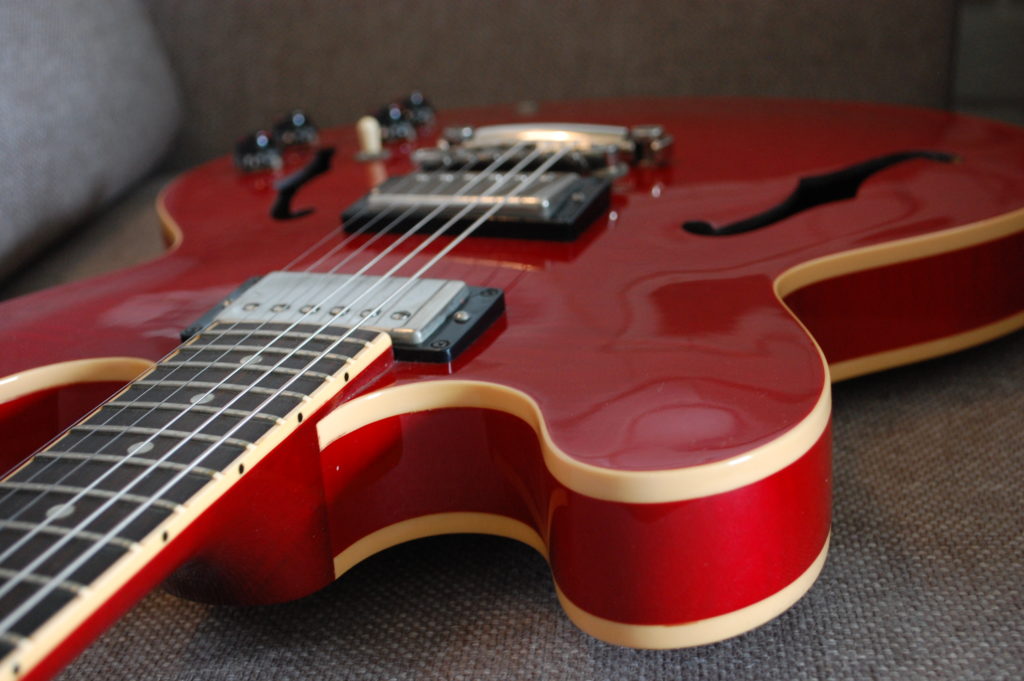

The semi-hollow combined the jazz guitar and the solidbody in the incredibly versatile ES-335, used by players of all styles. Introduced in 1958, still in production.
Red, of course. Made in 2001.
2023: And then?
Aluminium necks, carbon bodies, bowlbacks, synth effects, robot tuners. They have all come and, as it seems, stepped out by the side door. Strings, tone wood, and the trusted electronics fill the needs for most of us. Outboard effects may invent and improve, but the basic tool, the guitar, hasn’t changed in my generation.
I’m cool with that. Tiny variations make collections.